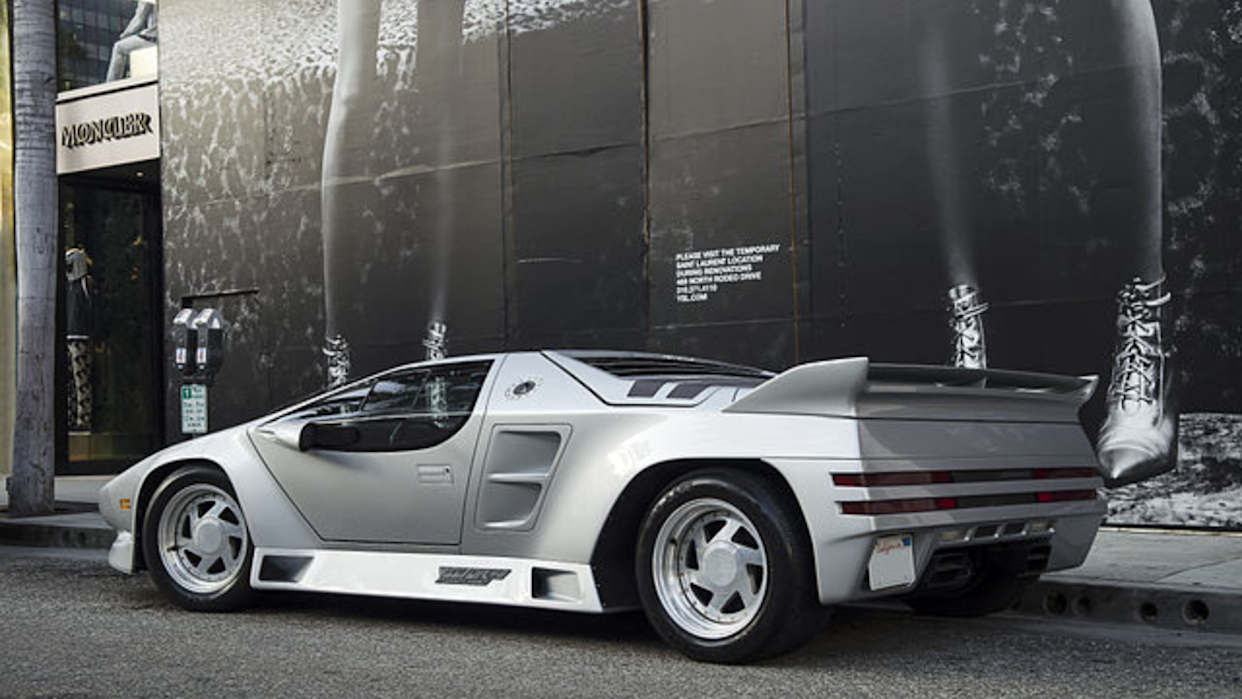
Automotive history is littered with the glorious, often heartbreaking, wreckage of ambition. Throughout the 20th century and well into the early 2000s, dozens of brave (or perhaps foolish) entrepreneurs and established corporations alike threw their hats into the ring, hoping to build something lasting, something iconic.
Some were visionaries, sketching bold ideas on napkins and building prototypes in drafty workshops. Others were mavericks chasing a better way to turn gasoline into motion. A few simply arrived too early — glimpses of a future no one was ready for. Most of these brands are long gone, but their first production cars still speak volumes: raw vision, unfiltered intent, and sometimes, gloriously naive optimism.
How Lost Brands First Hit the Road
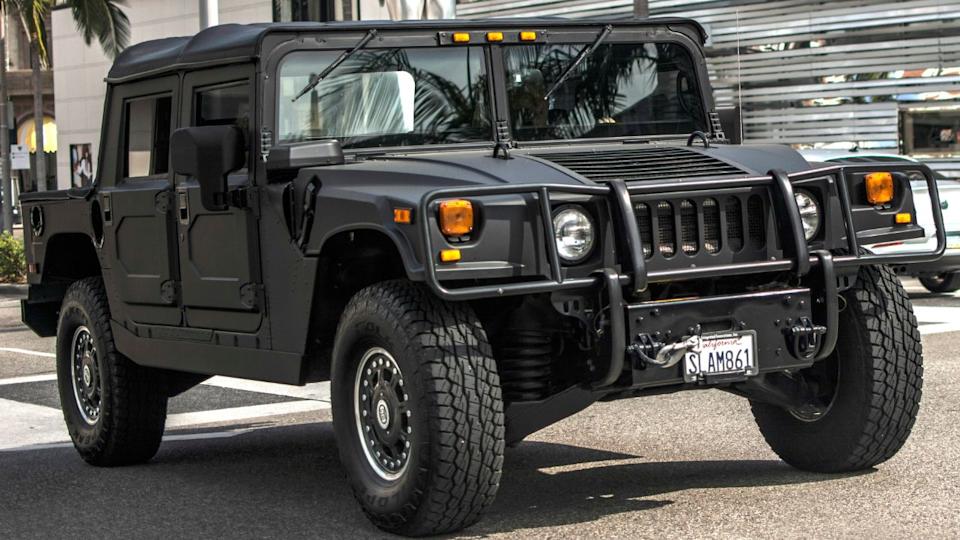
This is a dive into the automotive graveyard, tracing the origins of carmakers that no longer grace dealership lots but left behind a bold first impression. We focused on their very first production models, not prototypes or concept cars that spun on show stands, but actual vehicles sold to the public.
Each selection is based on verified production records and official market debuts. These cars weren’t always hits, but they were definitive statements, snapshots of ambition, innovation, or sometimes, a last-ditch reinvention that didn’t quite stick.
Let’s give these debut efforts their due. Because sometimes, a one-and-done with guts and character is more memorable than a soulless parade of mass-market mediocrity.
Tucker 48 – Tucker Corporation
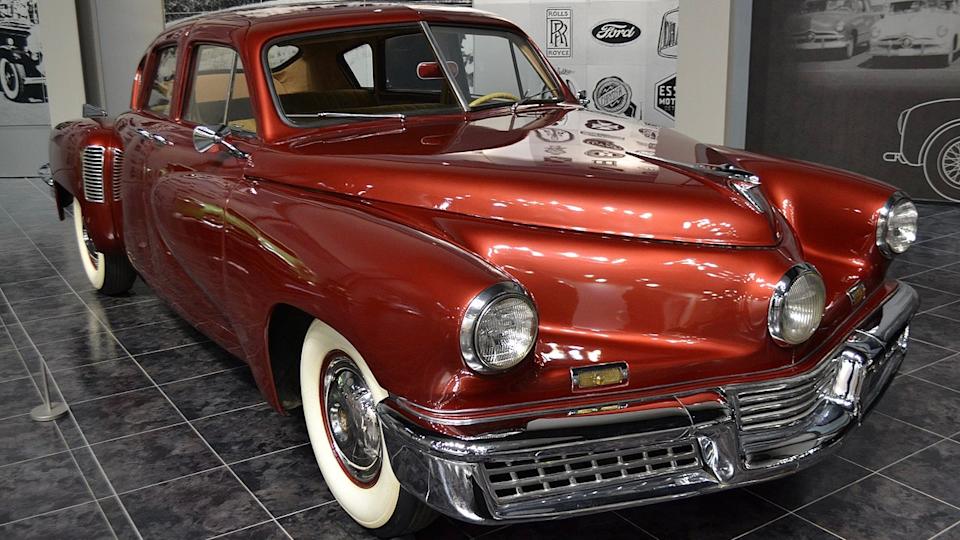
The Tucker 48 was one of the most audacious first cars ever produced, debuting with features that felt decades ahead of their time. From its rear-mounted engine to safety innovations like a padded dash and a central headlight that turned with the steering, it signaled a company ready to challenge the status quo.
Only 51 units were ever built before legal battles, financial shenanigans, and alleged conspiracies from the major automakers (or simply poor business decisions, depending on your preferred conspiracy theory) led to the brand's spectacular collapse. The Tucker 48's time on the market was short-lived but unforgettable, and it left a monumental impression as a rare example of unfiltered, uncompromising automotive ambition.
The Tucker 48 is so stunning and advanced that we almost forgot about all the legal drama — but not quite.
Bricklin SV-1: Bricklin Canada Ltd.
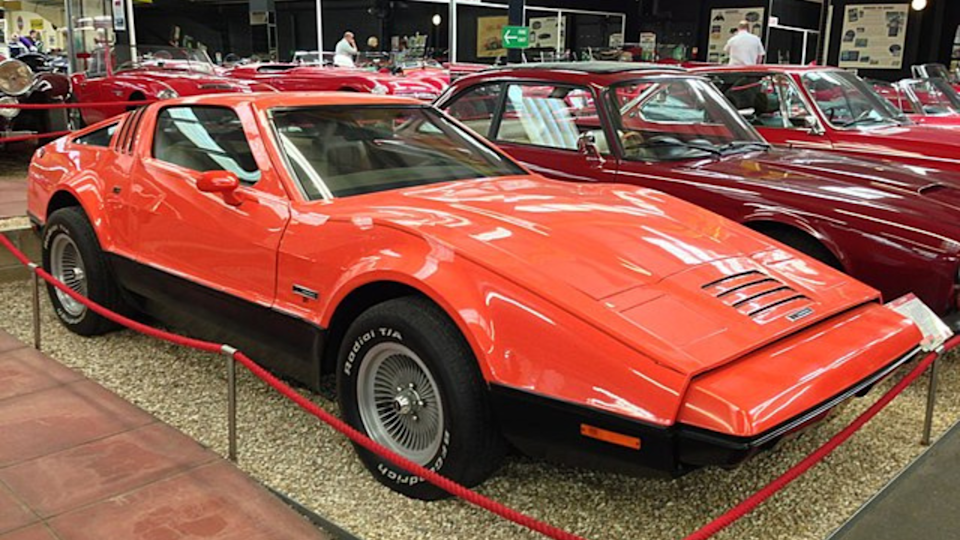
Malcolm Bricklin, a man known for importing Subarus and Yugos, decided his first foray into building cars should be something truly revolutionary. The Bricklin SV-1 (Safety Vehicle One) was built on the audacious promise of safety, style, and innovation, all wrapped in gullwings and fiberglass.
It came in bold, almost garish colors like "Safety Orange" and "Safety Green," boasted composite body panels (which, in fairness, tended to warp in the sun, among other issues), and featured clear safety-minded design choices, such as an integrated roll cage. The car was ambitious in its engineering, but it struggled mightily with build quality — especially those power-operated gullwing doors, which were notoriously slow and prone to breaking down — and, predictably, financial mismanagement.
Just under 3,000 units were built from 1974 to 1976. Still, its distinct, futuristic look and clear (if flawed) purpose have given it a niche, cult legacy. The SV-1 remains one of the few debut cars to attempt combining visual flair with a safety-first branding. It tried to be responsible and cool, but ended up being neither; however, we love it.
DeLorean DMC-12: DeLorean Motor Company
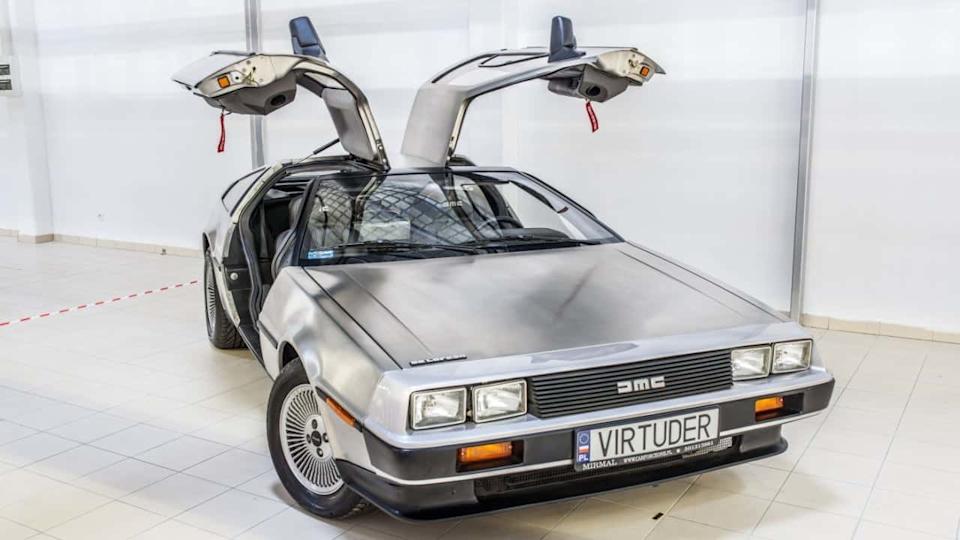
Few first cars have captured public imagination or inspired more movie sequels and a surprisingly good Broadway show, like the DeLorean DMC-12. With its iconic brushed stainless steel body and those unforgettable gullwing doors, it was the only model ever produced by the flamboyant John Z. DeLorean. Launched with sky-high hopes and a marketing push that bordered on evangelical, the DMC-12 promised the moon but delivered… well, a relatively slow 130 horsepower PRV V6 and a 0-60 time in the 9-10 second range (which was hardly "sports car" territory even in 1981).
Its real-world performance fell woefully short of its futuristic looks, and the brand collapsed under financial strain and its founder's infamous legal troubles. Production ceased after only about 9,000 units. However, a stroke of cinematic genius, Back to the Future, gave the DMC-12 new life, transforming it from a commercial flop into a permanent pop culture icon. As a first and final act, it became a case study in bold design, fragile business models, and the enduring power of a good movie.
Kaiser Special: Kaiser Motors

Henry J. Kaiser, a shipbuilding magnate, and Joseph W. Frazer, a seasoned auto executive, teamed up after WWII to take on Detroit. The Kaiser Special, debuting in 1947 alongside the Frazer Standard, marked a serious attempt at postwar innovation. It offered clean, "ponton" lines that looked fresh, a surprisingly spacious interior for its time, and progressive engineering choices, such as front-wheel-drive concepts (though these didn't make it to production).
Built during a period of immense demand for new cars, it quickly positioned Kaiser as a contender among established American brands, delivering affordability without cutting corners on comfort or presence. Though the brand never fully broke through to sustain long-term success against the Big Three's marketing muscle and production volume, the Special represented an intelligent response to immediate market needs. Its initial success helped the company build momentum, even if that momentum ultimately evaporated by the mid-1950s.
Edsel Ranger: Edsel Division (Ford Motor Company)

The Edsel Ranger was one of the launch models for Ford's infamous Edsel division. This car and the brand it represented are practically a punchline in automotive history. Ford poured millions into the Edsel brand, aiming to fill a perceived gap between its mainstream Ford models and the slightly more upscale Mercury.
The Ranger offered "bold styling" — notably that unique, controversial "horse collar" or "toilet seat" grille — and heavy chrome, making it instantly recognizable, though usually not in a flattering way. The public simply didn't "get" the Edsel (and I don't either). Slow sales, a confused market position, and arguably bad timing during a recession led to its rapid, spectacular demise after just three model years (1958-1960).
The Ranger symbolized the risks of misreading consumer desires during a period of market saturation. As a first car, it stands as a colossal, chrome-laden lesson in marketing hype versus market reality. Sometimes, a car is just ugly, and no amount of ad money will fix that. That grille will haunt my dreams more than Freddy Krueger. Can't. Unsee.
Rambler: Nash and American Motors Corporation
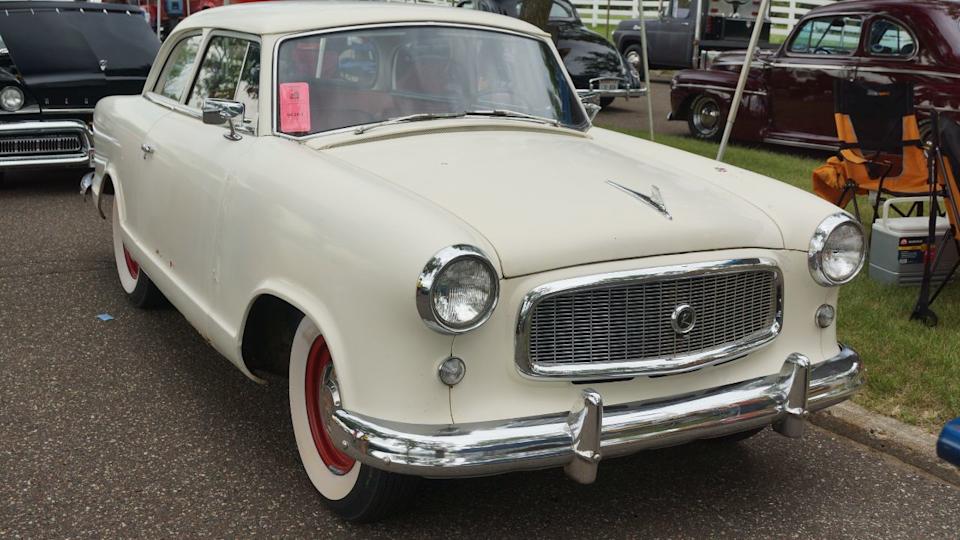
The Rambler began life in 1950 under Nash, emerging as a compact, economical alternative to the chrome-heavy land yachts of postwar America. It challenged the prevailing wisdom that bigger was always better, offering a smaller footprint, excellent fuel economy, and smart use of space — all wrapped in a stylish package that didn’t feel stripped down.
After Nash merged with Hudson to form American Motors Corporation in 1954, the Rambler briefly went dormant. Then, in 1958 — during a recession that made full-size sedans look bloated and impractical — AMC revived it as the Rambler American. The timing was perfect. With its unibody construction, nimble proportions, and affordability, the American quickly found favor among budget-conscious families and city dwellers alike.
Whether under Nash or AMC, the Rambler made a strong first impression by going against the grain. It laid the foundation for AMC’s reputation as the scrappy, sensible alternative to Detroit’s giants. It wasn’t flashy, but it was smart — and it proved that compact cars could carve out real space in the American market.
Saab 92: Saab Automobile

If you want a car with an aviation pedigree, look no further than the Saab 92. This was Saab’s very first foray into automotive production after years of building aircraft, and that background practically screamed from its streamlined, teardrop-shaped, aerodynamic body. Debuting in 1949, it was compact, featured innovative front-wheel drive (a rarity at the time), and was engineered specifically for the brutal northern European conditions. And it's honestly quite adorable, like a little frog. The first production models were even painted dark green, using leftover aircraft paint!
Saab focused on innovation, safety (with features like a unibody construction and energy-absorbing crumple zones), and unconventional engineering from the very beginning — traits that stayed with the brand throughout its life. The 92 wasn't just a product; it was a blueprint. Its unconventional engineering approach and obsession with intelligent design gave Saab a distinct identity that still resonates with enthusiasts today, even if the brand itself is now sadly grounded.
Hummer H1: Hummer (AM General)

Originally built to carry troops across hostile terrain, the Hummer H1 quickly morphed into an MTV-era status symbol — often parked behind golden gates or sprawled across three spaces outside a plastic surgeon's office. Debuting in 1992 as the first civilian Hummer, it was unlike anything else on the road at the time.
This monstrous, wide, loud, and unapologetically utilitarian machine was a direct descendant of the military Humvee, brought to civilian life largely thanks to Arnold Schwarzenegger’s personal lobbying. It appealed to those seeking the ultimate off-road machine, with instant credibility thanks to its military roots and virtually unstoppable capability.
Wildly impractical for city life, it still helped define Hummer’s outsized identity. The H1 remains one of the most recognizable first-model debuts ever — a rolling monument to American excess and the desire to drive something that could flatten a smart car without breaking a sweat.
Geo Metro: Geo (GM brand)
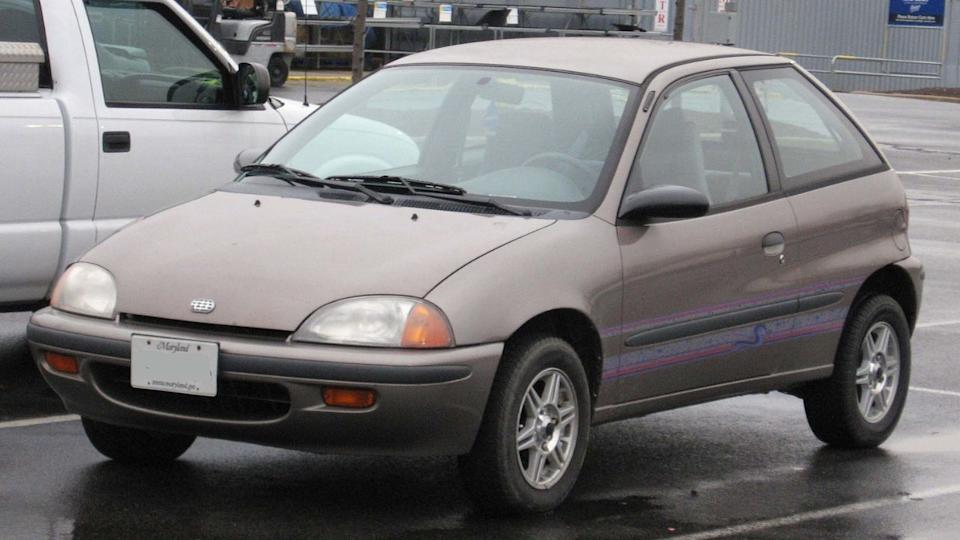
The Geo Metro was often the subject of jokes, but for its intended purpose, it was a little economic champ. The Metro served as Geo’s opening act when GM launched the brand in 1989, specifically targeting drivers who prioritized fuel economy and low cost above all else. Compact, remarkably efficient (the XFi model often achieved 50+ MPG) and inexpensive to maintain, it appealed to commuters and budget-conscious buyers during an era of rising fuel awareness.
Built in partnership with Suzuki (as a rebadged Suzuki Cultus/Swift), it introduced a foreign sensibility and economy to a domestic badge, providing GM with a much-needed entry into the burgeoning small car market. While the Geo brand was short-lived (it was absorbed into Chevrolet by 1998), its first car addressed a clear, undeniable market need. It was the automotive equivalent of a really good ramen noodle recipe — cheap, simple, and surprisingly satisfying.
Eagle Premier: Eagle Division (AMC/Chrysler)
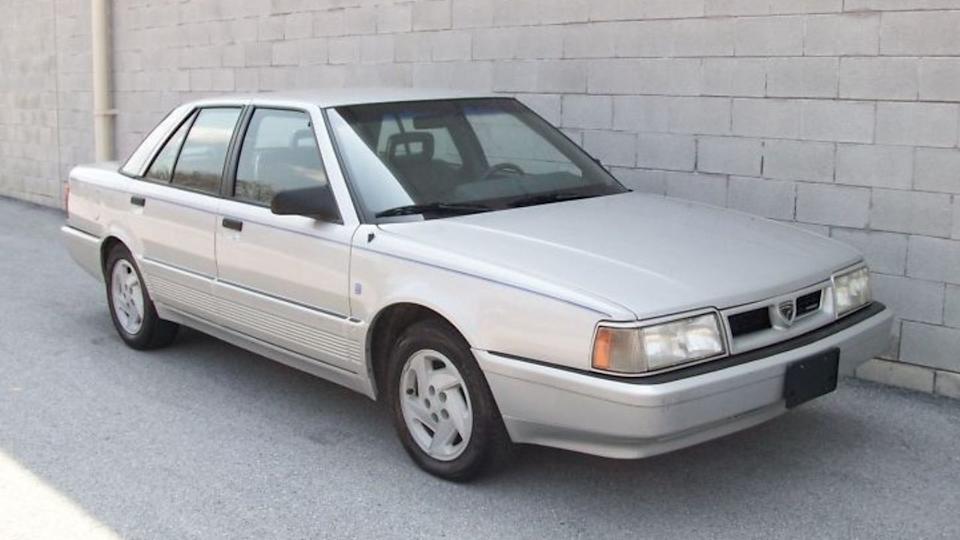
The Eagle Premier was a high-tech, European-influenced sedan developed through a collaboration between Renault (then the owner of AMC) and, later, Chrysler (which acquired AMC in 1987). It offered a refined ride, advanced electronics for its time, and sleek styling by Giorgetto Giugiaro at ItalDesign — a sharp contrast to the boxy norms of American cars in the late 1980s. Its longitudinally mounted engine (a Renault hallmark) and airy, thoughtfully laid-out cabin reflected a clear engineering vision.
Though it never found widespread commercial success, the Premier gave the fledgling Eagle brand a distinctive identity. Chrysler created the division largely to sell this car and repurpose AMC’s legacy. While the Premier faded quickly from memory, it deserved more recognition as an ambitious debut with real substance behind its understated design.
Daewoo Lanos: Daewoo Motor America

In the late '90s, the Daewoo Lanos was a quirky fixture of campus parking lots and budget-friendly dealerships — often sold by college students as part of the company’s unorthodox "Daewoo University" campaign. Designed by Giorgetto Giugiaro (yes, the same guy who penned the DMC-12), it offered accessible pricing, simple mechanics, and a vaguely European-influenced design that gave it just enough flair to avoid total anonymity.
While it never posed a real threat to more established rivals from Japan or even Detroit, the Lanos did manage to introduce Daewoo to global audiences. Alongside its Nubira and Leganza siblings, it represented a modest, often flawed start with international ambition — basically, a first date you hoped would lead somewhere, but didn’t.
Vector W8: Vector Motors
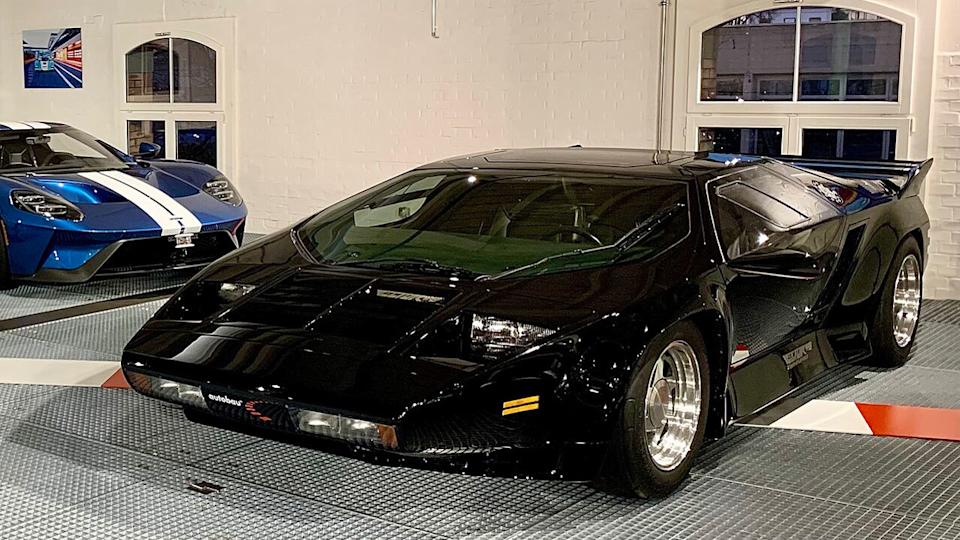
The ambitious and slightly unhinged W8 was Vector Motors’ audacious, aerospace-inspired debut — a homegrown supercar meant to take on Ferrari and Lamborghini. With its fighter-jet cockpit interior, angular alien styling, and outrageous performance claims (including a theoretical 242 mph top speed), it made headlines throughout the late ’80s and early ’90s. Powered by a twin-turbo 6.0L Rodeck V8 pushing over 600 horsepower, the numbers were as wild as the design.
Production was famously chaotic. Overseen by eccentric founder Gerald Wiegert, only 17 customer cars (plus two prototypes) were ever built. Reliability was… optimistic. Still, the W8 became a cult icon — a symbol of fearless, sometimes reckless, ambition. Its $450,000 price tag in 1991, insane wedge profile, and handcrafted California origins cemented its legacy.
It may not have achieved mainstream success, but the W8 remains one of the boldest first cars ever built — a gloriously unhinged wedge of pure American excess. And for the record: I love this car. I don’t care what you say.
Where It All Began — and Ended

These early models tell the story of companies that launched with bold ideas and boundless vision, even if they didn’t survive the brutal road ahead. Each one served as an introduction, a first impression built on ambition, not caution.
What connects them all is the sheer audacity, the ambition to create something lasting and impactful in one of the most demanding, cutthroat industries in the world. Revisiting these beginnings gives us a clearer view of how innovation often comes from unexpected places, from mavericks and dreamers rather than just the corporate giants.
These cars may be from brands that are no longer with us, their factories silent, their logos forgotten by many, but their influence, their creativity, and their sheer, unadulterated automotive curiosity remain alive, a testament to a time when everyone, it seemed, wanted to build a better mousetrap (or, in some cases, a steel gullwing time machine).
Like our content? Follow us for more.
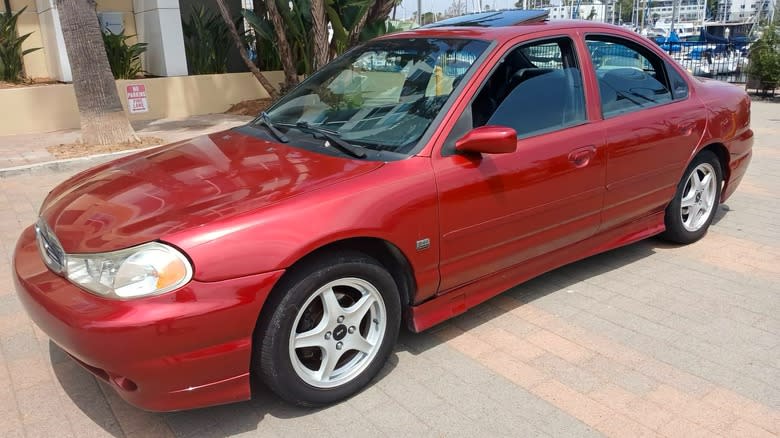
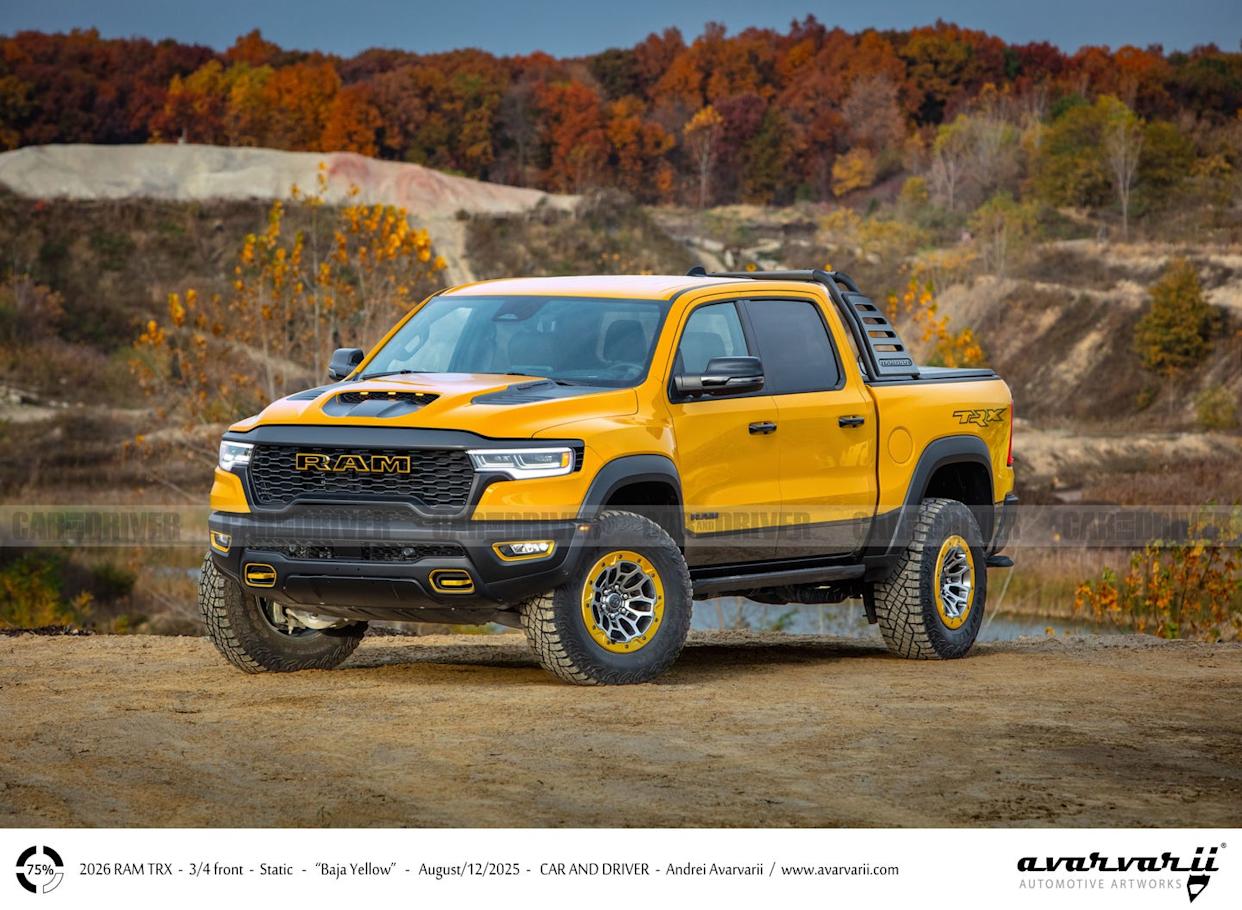
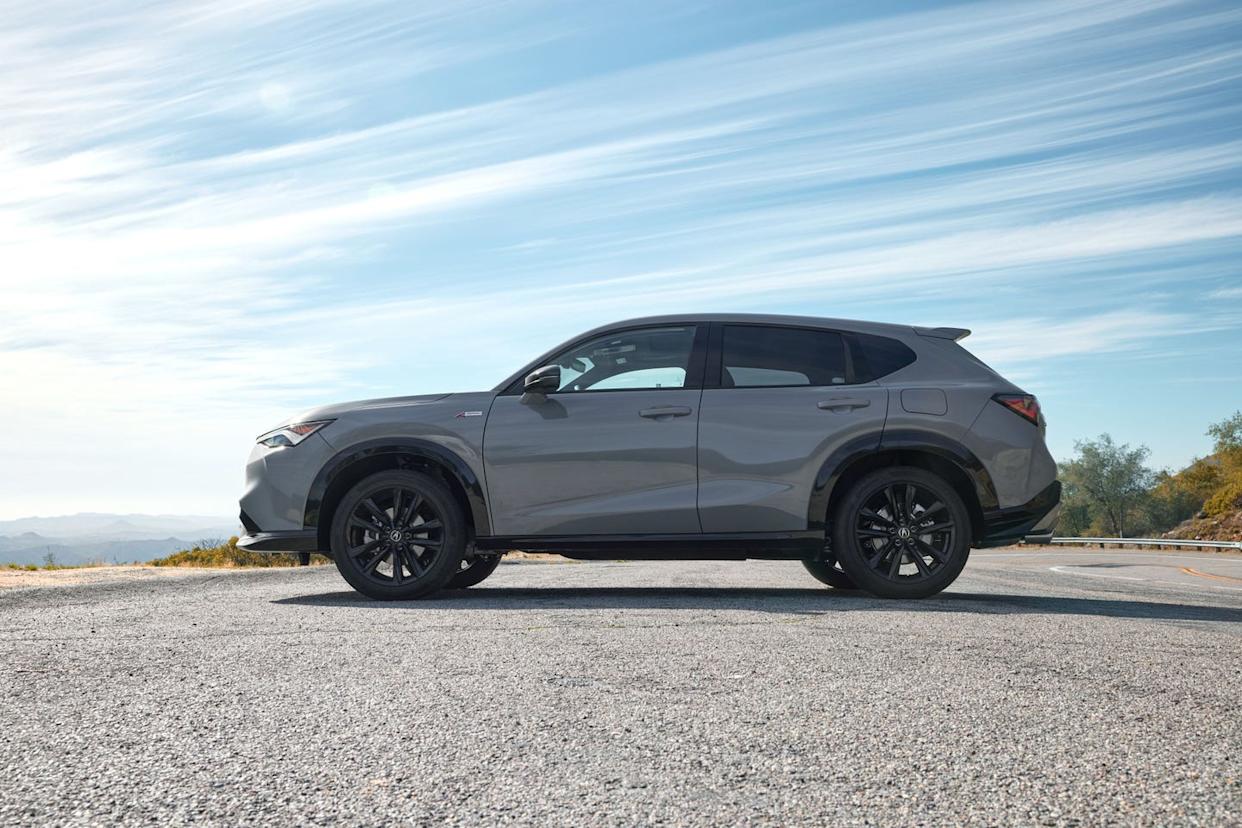


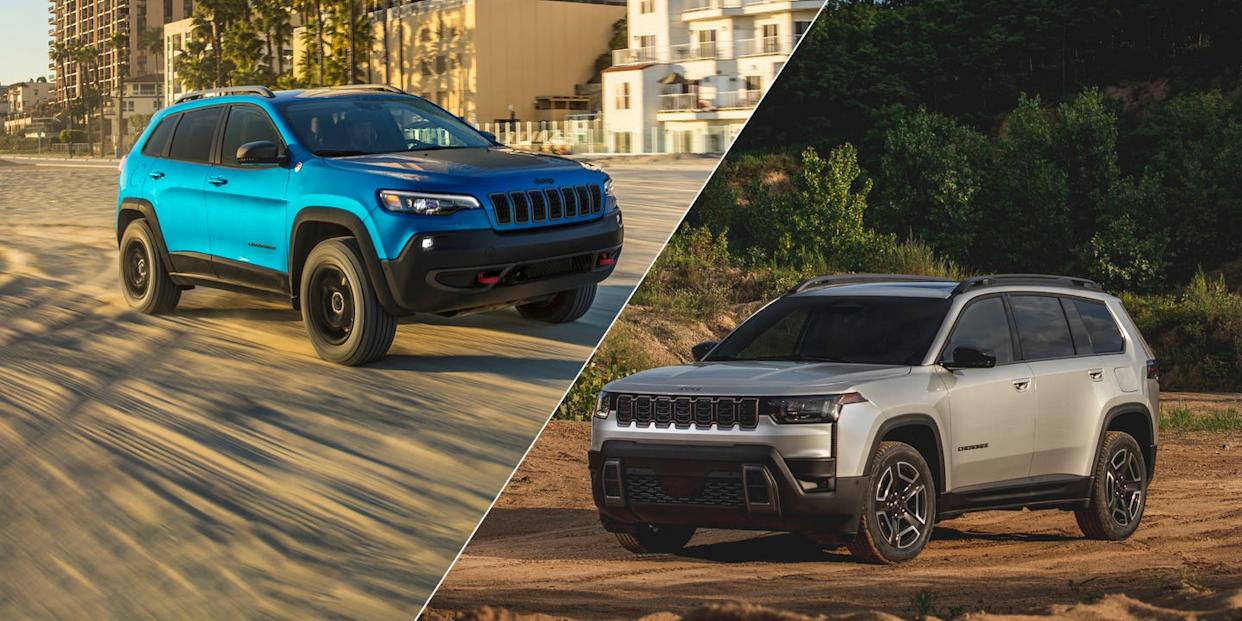

Comments